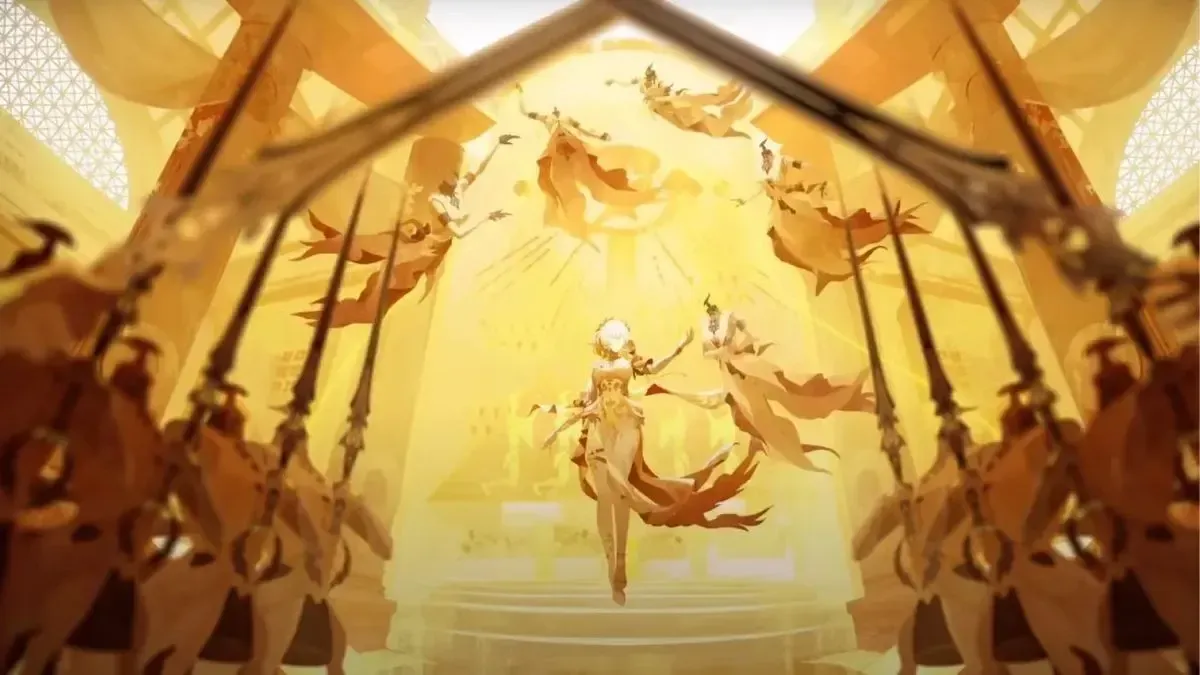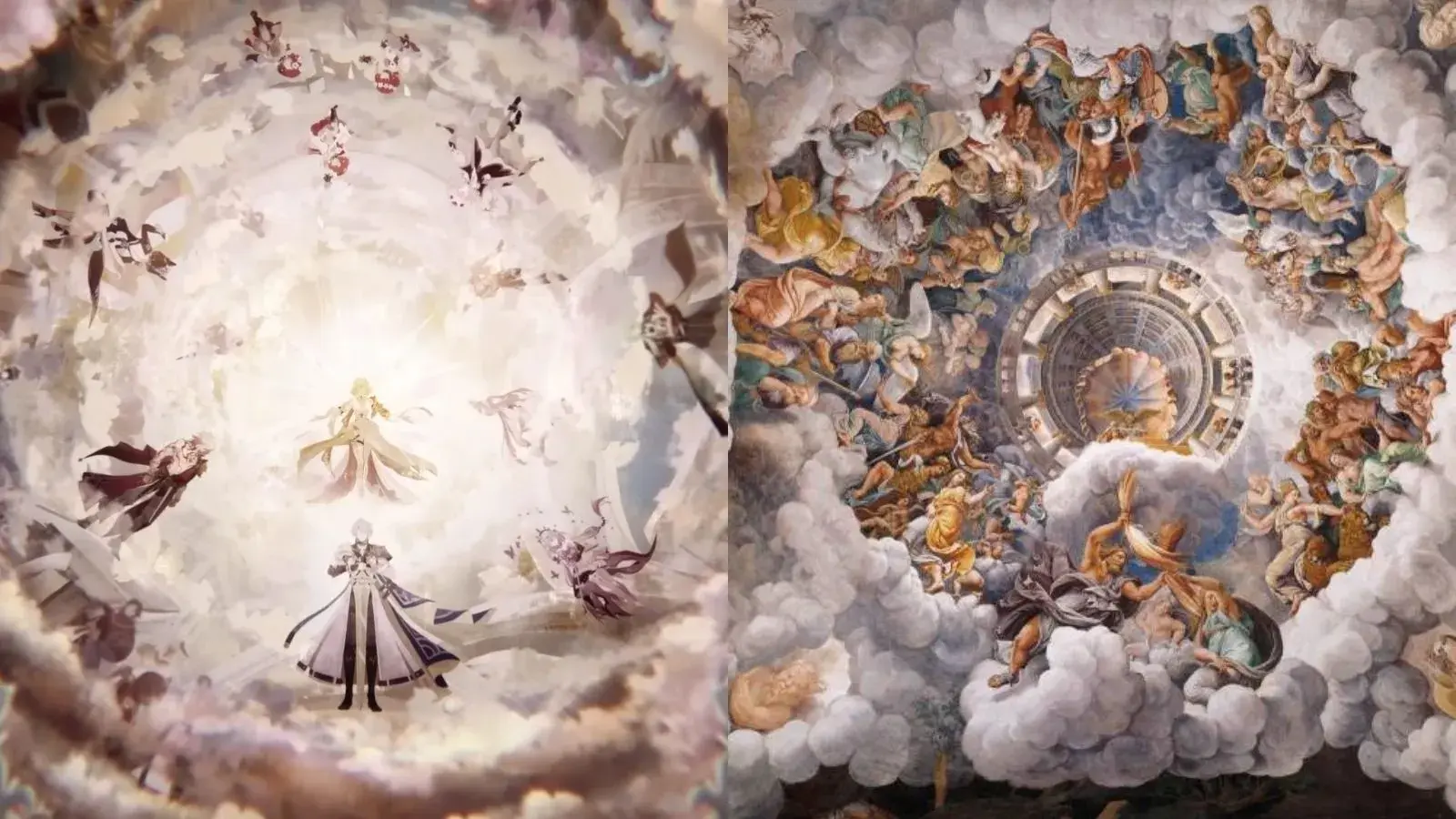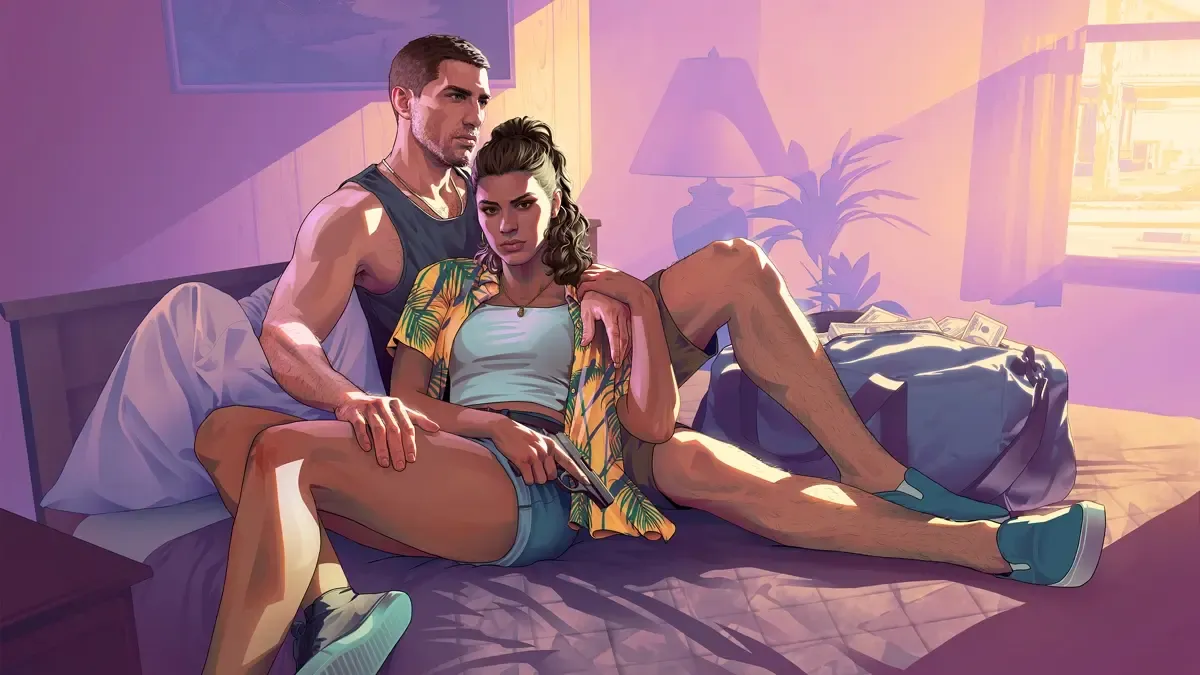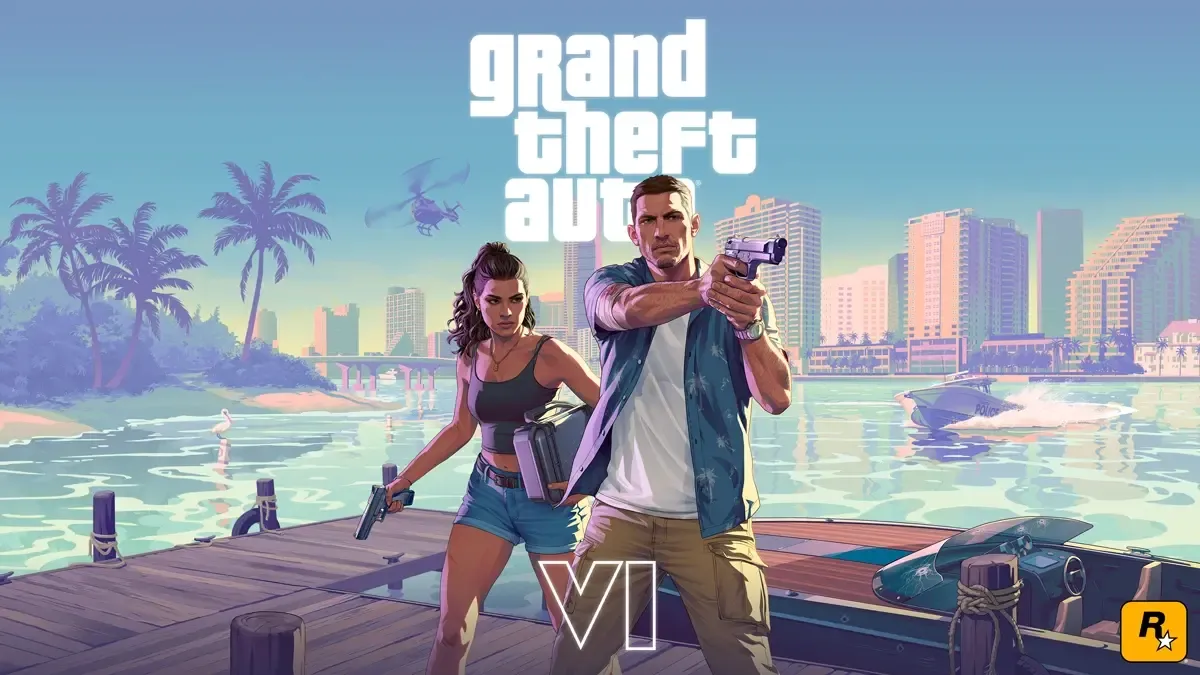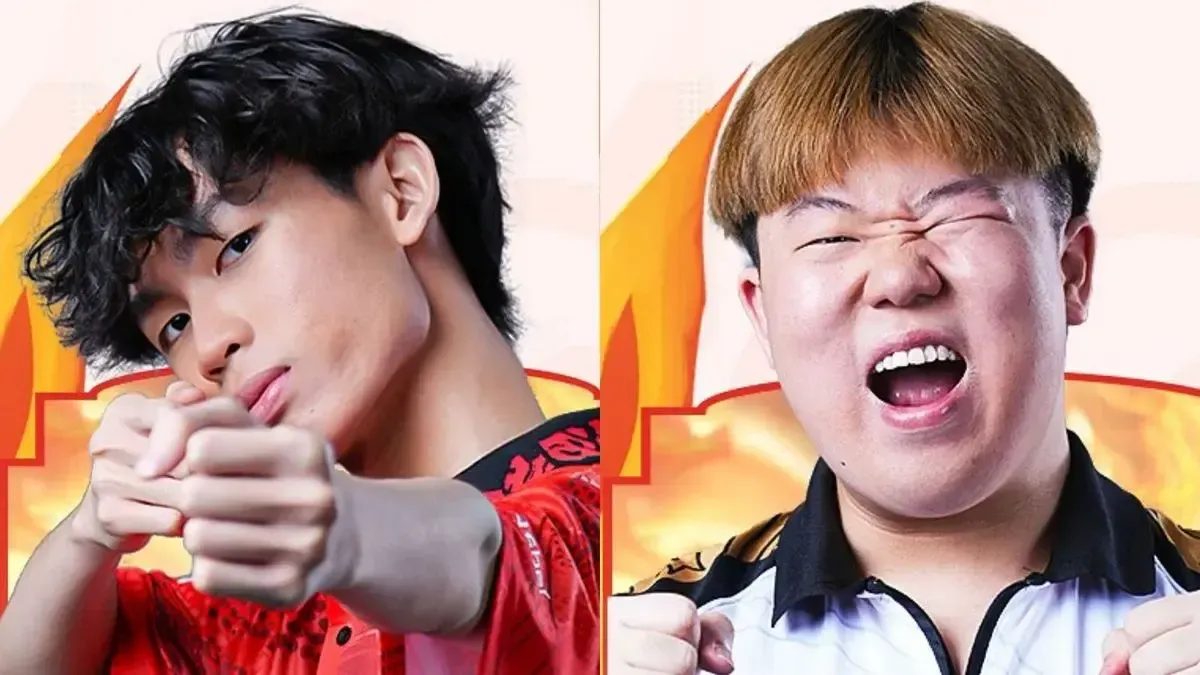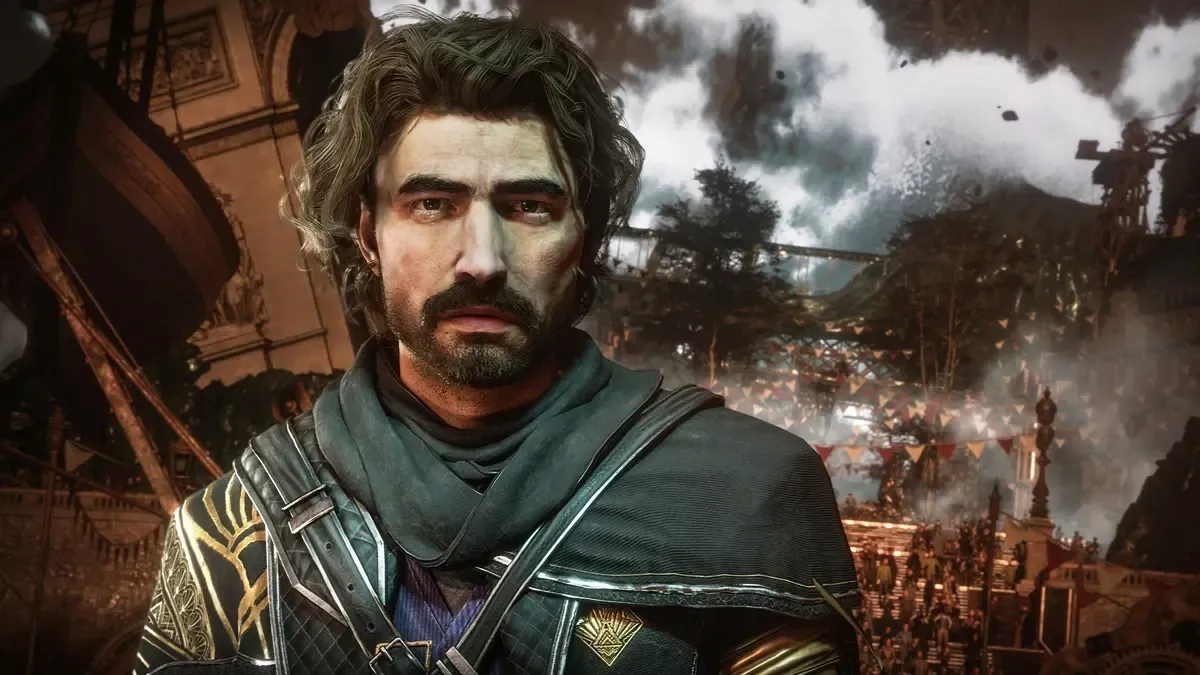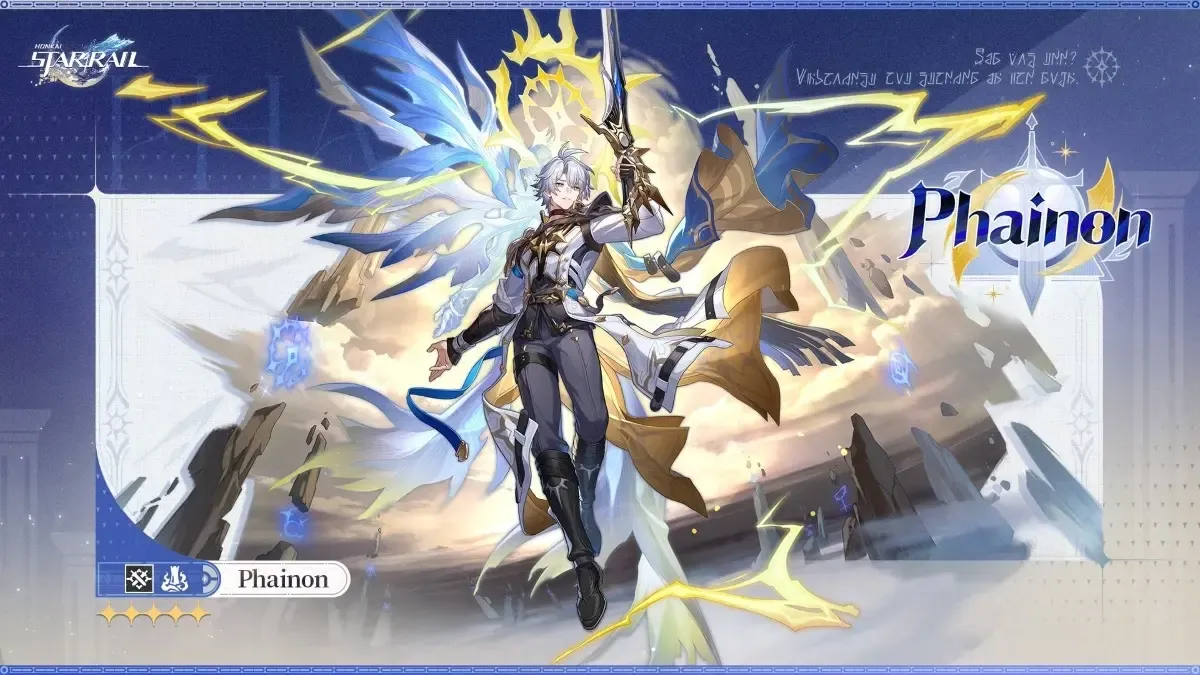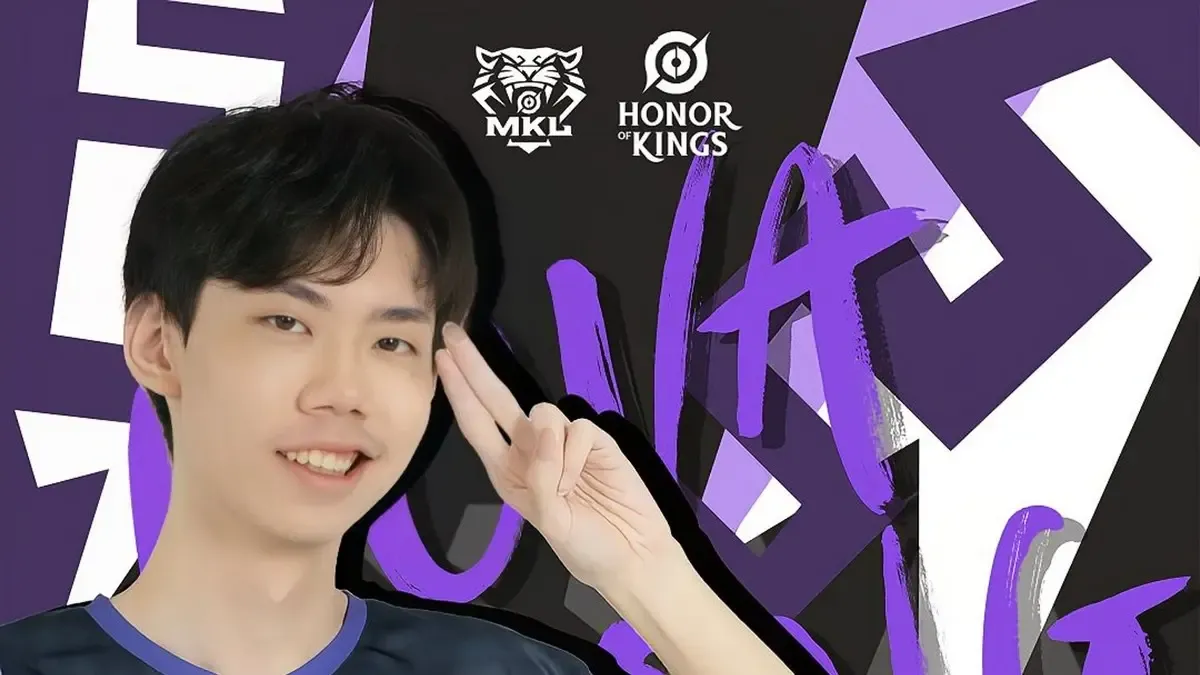Source: HoYoverse
Honkai Star Rail’s Golden Epic trailer, which introduces the heroes of Amphoreus, has tons of references to classical antiquity.
If you’re a history nerd like me, I’m sure you were able to spot the fact that Amphoreus is heavily inspired by both Roman and Grecian mythology, with references to some influential people and events from classical antiquity. Wondering what they are? Here’s what we spotted in the Golden Epic trailer!
References to Greco-Roman mythology
The Age of the Titans
The Golden Epic trailer starts off with the legend of the Titans, a clear reference towards the pre-Olympian gods known as the Titans. The Titans, as espoused by the Greek poet Hesiod in a poem called the Theogony, were known for being a golden race. This idea was furthered by the Romans, who believed that the Titans blessed humanity with a golden age of peace and prosperity.
Although the trailer for Amphoreus doesn’t go into full detail about their version of the Titans, it did mention 12 figures; three who “carved the heavens and the earth,” three who “wove the threads of fate,” three who “molded life with their hands,” and three who “guided calamity’s gate."
The Titans who “carved the heavens and the earth” may reference the primordial gods Uranus (sky), Gaia (earth), and Nyx (night); the three who “wove the threads of fate” may reference the Three Fates - Clotho, Lachesis, and Atropos - who presided over human life; the gods who molded life may reference Prometheus and Epimetheus, who created all life on earth, as well as Athena, who breathed life into man; while the ones who preside over calamity may possibly call back to Eris, the goddess of discord and strife, and her children, who personify undesirable abstractions.
The Heretical Black Tide
The “heretical black tide” mentioned in the trailer may reference the god Zeus’s eventual rise into power and the Titanomachy, or the war between the Titans and the Olympians. The Titanomachy effectively ended the Titan’s golden age, and, although Amphoreus’s version of this war was said to have lasted millennia and did not outwardly reference the fall of the Titans, the emphasis on the subsequent darkness and chaos perfectly mirrors the devastating results of Zeus taking over as Greece’s principal deity.
The trailer also features a massive hand being chained; likely a callback to how the defeated Titans were imprisoned by Zeus at the end of the Titanomachy.
The Heroic Heirs of this world
Honkai: Star Rail has also introduced 8 of the 13 Chrysos Heirs, those who inherited the golden blood and are tasked as the “heroic heirs of this world." The word Chrysos itself references a minor Greek god named Chrysus, who is the personification of gold. They are:
- Aglaea the Goldweaver - referenced from Aglaea, one of the three Kahrites and the goddess of beauty, splendour, glory, and adornment.
- Tribbie, the three-faced messenger - likely inspired by the messenger gods Iris and Hermes, as the trailer features two Tribbies.
- Anaxa, or Anaxagoras the Foolish - a reference towards the Greek philosopher Anaxagoras, who purported the physical theory of “everything-in-everything," and claimed that the mind was the motive cause of the cosmos.
- Hyacine, the priest who severs dawn from dusk - may be inspired by the Greek hero Hyacinthus, whose blood Apollo used to create the Hyacinth flower. In the language of flowers, Hyacinths symbolise jealousy, a desire for forgiveness, joy, and sincerity.
- Mydei, or Mydeimos the Undying - referencing Deimos, the son of Ares and Aphrodite, and is known as the personification of fear before battle.
- Cipher, or Cifera the fleet-footed - there is no known Greek reference towards the name Cifera, but the fleet-footed title is also another callback to Hermes, who is known as the fastest of the gods.
- Castorice, daughter of the River Styx - known as the one who grants the embrace of death, Castorice may be a reference towards the Oceanid Styx, the eldest daughter of the Titan Oceanus, and a river in the Underworld.
- Phainon, the nameless hero - likely referencing Phainon, the god of the wandering star.
Three other names are also mentioned in the video description, that being Hysilens, Cerydra, and Cyrene. Hysilens could be a reference to the Phthian princess Hiscilla, who was the daughter of King Myrmidon, son of Zeus and Eurymedusa. Cerydra is possibly attributed to Ceres, the goddess of agriculture. Cyrene is a direct reference to the Tessalian nymph princess Cyrene, who wrestled a lion that had attacked her father’s flocks, earning the love of the sun god Apollo.
References to historical events, art, and more
The trailer also features a few references to some historical events, art, and more. Here’s what we were able to find and any significant timestamps!
- The name of the planet Amphoreus is derived from the word amphora, an earthen, pot-bellied vessel with a narrow neck and two handles. The word amphora comes from amphi, which means two sides, and phoreus, which means “to carry”.
- The number 3 pops up a lot in the Golden Epic trailer, and don’t assume that it doesn’t have any significance! According to the Greek philosopher Pythagoras, the number 3 is considered as the perfect number, and represents harmony, wisdom, and understanding. The number 3 is also associated with Cronos, the Titan who fathered the Olympians.
- The infamous assassination of Julius Caesar is possibly referenced at 0:53, with a figure likely referencing Brutus stabbing him in the back.
- The chained hand holding the sun at 1:27, which was earlier mentioned as a likely reference to the Titans being imprisoned after their defeat, can also reference Prometheus. Prometheus is known for bringing fire to humanity, before being chained to a rock to be pecked at by vultures as a consequence of his actions.
- Aglaea’s depiction at 1:47 holds a similar composition to that of Sandro Botticelli’s painting “The Birth of Venus”. Furthermore, Aglaea’s role as someone who must “gently caress the holy city’s silken web” may mean that she is possibly also inspired by Arachne, a skilled weaver in Greek mythology who challenged Athena, the goddess of war, and was later transformed into a spider.
- The dragon featured alongside Castorice at 2:44 may reference the fierce dragons that are mentioned in the philosopher Apuleius’s Metamorphoses, who are mandated to guard the water of the River Styx.
- The scene where all Chrysos Heirs are featured at 4:03 may possibly be inspired by the painting of Renaissance artist Giulo Romano, titled “The Assembly of Gods Around Jupiter’s Throne." Jupiter is the Roman equivalent of Zeus.
Honkai: Star Rail's most recent update was Version 2.6, which was released on October 23, featuring a new 5-star character in Rappa, a new Trailblaze Continuance Mission that sees the Astral Express Crew return to Penacony, a new Simulated Universe game mode, and more. Currently, the version update is in its second half, with Acheron and Aventurine running alongside each other in a dual rerun banner.
Following Honkai: Star Rail Version 2.6 is Version 2.7 in December, which will feature the release of two highly-anticipated 5-star characters in Sunday and Tingyun's ‘Fugue’ form.
Trailblazers can expect an upcoming major update to Honkai: Star Rail in 2025 with version 3.0, which will introduce the new planet Amphoreus alongside a host of new characters like The Herta, Aglaea, and the Remembrance Trailblazer, as well as new content and other additional features.

